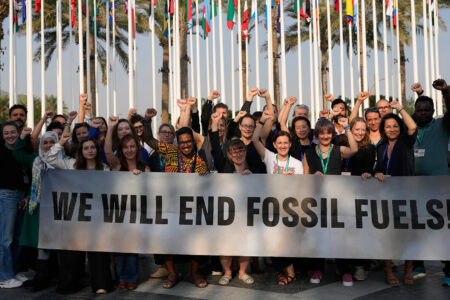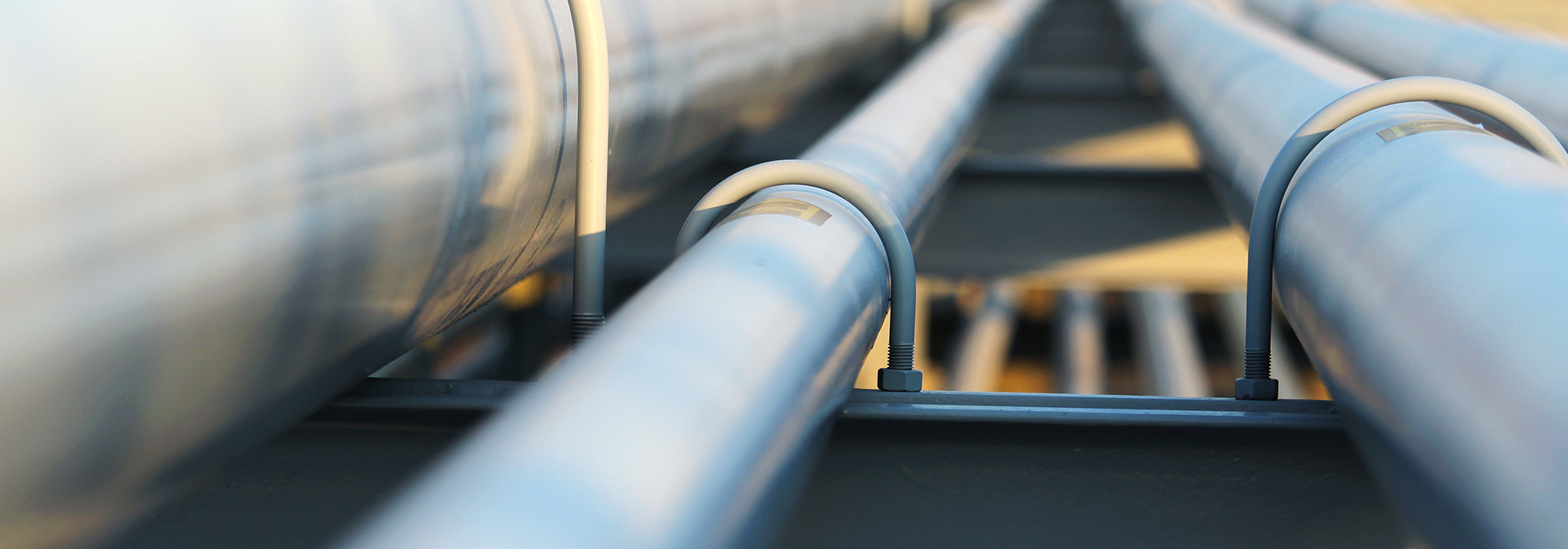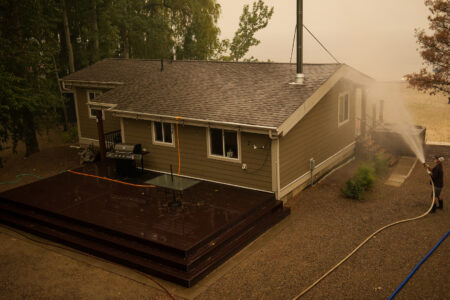
Canada is the world’s fourth largest producer of both conventional and unconventional crude oil. Unlike most other major producers, Canada has essentially one export market: the United States. Crude and refined oil exports from Canada to the US doubled between 2003 and 2017, but the lack of pipeline capacity to the US, coupled with increased production in both countries, has resulted in western Canadian crudes being sold at a discount. The decline in revenues is hurting producers and reducing the royalties paid to the federal and provincial governments. This has many Canadians calling for new, overseas markets for Canada’s crude oil.
Apart from oil production in Newfoundland and Labrador, the bulk of Canada’s oil production is landlocked in Alberta and Saskatchewan. Reaching overseas markets will require moving western Canadian oil to tidewater (coastal waters) either on the west coast (through British Columbia) or on the east coast (through Manitoba, Ontario, Quebec and possibly New Brunswick).
Many proponents of an east coast pipeline see it as a way to end Canada’s reliance on countries such as Saudi Arabia for crude oil. A link to the east coast would mean that the 300,000 barrels-per-day Irving refinery in Saint John could be supplied by producers in Canada (and the US).
In August 2013, TransCanada (now TC) proposed the Energy East pipeline project, a 1.1-million- barrels-per-day pipeline to carry western Canadian crude oil through Quebec into New Brunswick. It would have given the Maritime provinces access to western Canadian crude oil, and it would have given western Canadian crude oil access to tidewater and the countries in the Atlantic basin.
For a wide variety of reasons, including a decline in global oil prices, a change in the federal government, regulatory delays, and objections from some Quebec politicians and other groups, TransCanada abandoned the Energy East project in October 2017.
After that, the prospects for an eastern pipeline seemed to be all but dead, despite the federal Conservatives’ repeated calls for one. However, things changed when the Trans Mountain pipeline expansion, intended to transport 890,000 barrels of crude oil from Alberta to Vancouver for export to Asian markets, was blocked by the BC NDP-Green coalition and some Indigenous communities in 2017.
In May 2018, the federal government responded by purchasing the Trans Mountain pipeline and, after a Federal Court of Appeal ruling, began additional consultations with environmental groups and Indigenous peoples. The cancellation of earlier pipeline projects and the delays to the expansion of Trans Mountain rekindled interest an east coast pipeline.
In May 2019, the newly elected premier of Alberta, Jason Kenney, supported by the premiers of New Brunswick, Ontario and Saskatchewan, called for an east coast pipeline. Later in the month, the federal Green Party called for more heavy-oil upgraders in western Canada to produce synthetic crude oil for eastern Canadian refineries. Green Party Leader Elizabeth May suggested that the move is intended to end the region’s reliance on imported crude by 2030.
(It is unlikely that the federal cabinet’s June 2019 decision to approve the Trans Mountain expansion will do anything to curtail support for a pipeline to the east coast, any more than the purchase of the Trans Mountain pipeline did.)
The arguments in favour of a pipeline to move western Canadian crude to eastern Canada are being framed as an energy security issue: spending $3.5 billion in 2018 on “dirty oil” from Saudi Arabia is deemed unacceptable. But the Quebec government has made it clear that it does not want western Canadian crude oil passing through Quebec, even though crude oil from western Canada, together with some from the US, currently meets over half of Quebec’s crude-oil requirements.
Putting aside Quebec’s objections for a moment, if a pipeline could bring western Canadian synthetic crude oil to the Ontario-Quebec boundary, there would be five possible routes for transporting the oil through Quebec to Saint John, as shown in the map (figure 1).
Three routes originate in Montreal. Route 1 is a pipeline that retraces the route of the original Energy East Pipeline, from Montreal to Lévis, across from Quebec City (the Valero refinery) and then goes through New Brunswick to Saint John. Routes 2 and 3 transport the crude from Montreal by tanker down the Saint Lawrence River. In route 2, the tankers sail directly to Saint John, while in route 3, the tankers offload their cargo in Bathurst, New Brunswick, and from there the crude is pumped by pipeline to Saint John.
The first leg of routes 4 and 5 is a pipeline carrying the crude oil from Ramore, Ontario, to Port Saguenay, Quebec. It would run parallel to a proposed natural gas pipeline that would be built in Port Saguenay for liquified natural gas exports to Europe. From Port Saguenay, on routes 4 and 5, the crude oil would be transferred to tankers that would go either directly to Saint John (route 4) or to Bathurst and then to Saint John, by pipeline (route 5).
GHG emissions and pipelines
All the routes would produce emissions. Pipeline emissions come from the electricity used to pump the crude oil. Tankers produce emissions as a result of the fuel used to propel them. The total emissions shown in figure 2 assume there would be enough crude oil going in pipelines and tankers to meet the Saint John refinery’s 300,000-barrels-per-day demand.
Depending on the route, pipelines would run through Quebec or New Brunswick, or both. Emissions from pipelines running in Quebec would be about 1 percent of those running in New Brunswick; this difference is due to the provinces’ electricity mixes: Quebec’s is almost exclusively hydroelectric, whereas New Brunswick’s is a combination of hydroelectric, nuclear and thermal (coal and heavy oil).
All tankers have the same speed at sea, daily fuel demand, and emissions. The total emissions from a tanker’s path are a function of the length of the route, which also determines the number of tankers required for a route.
The Saint John refinery is responsible for about 3 Mt (megatonnes) of emissions annually; the overall contribution of emissions from the routes is small, ranging from 0.5 percent to 4.4 percent of the refinery’s total emissions. Compared with the emissions associated with the refined products the refinery is responsible for ─ about 40 Mt per year ─ the emissions from the routes, which range from 0.04 percent to 0.34 percent, are relatively low.
The Saguenay-St. Lawrence Marine Park
The Saguenay-St. Lawrence Marine Park, jointly administered by Parks Canada and Quebec, encompasses an area of 1,138 km2, and it includes most of the Saguenay fjord and part of the Saint Lawrence at the mouth of the Saguenay River. It is home to diverse marine life, including beluga whales and blue whales, both of which are considered endangered species.
Because female belugas and their offspring are known to congregate in the Baie Sainte-Marguerite portion of the Saguenay fjord, human activities there are restricted throughout the summer months. Merchant shipping must operate at reduced speeds in designated areas.
Policy options for the routes
Route 1 would involve the lowest emissions and would not interact with marine life. However, as this route follows the route of the original Energy East pipeline, it seems unlikely that any Quebec premier would be willing to allow it to proceed. If Quebec pursued it in the courts, the province might use the notwithstanding clause, or else it might result in a constitutional crisis.
Routes 2 and 4, which would sail directly to Saint John, would involve the highest emissions, whereas routes 3 and 5, which would sail first to Bathurst, would be responsible for lowering emissions by 40 percent and 46 percent, respectively. However, although the Port Saguenay-Bathurst route would produce lower emissions, the fact it would pass through the Saguenay-St. Lawrence Marine Park could make it the more controversial choice of the two routes.
Moving crude by tanker in the Saint Lawrence has been a commonplace activity for decades. Given this history, and the fact that the Valero refinery is supplied by tankers that shuttle crude oil from Montreal ─ much of it from western Canada ─ throughout the year, the Quebec government might have a hard time arguing against tanker movements in the area.
A pipeline across northern Quebec stands to benefit Indigenous communities if they are given equity stakes in the project. The James Bay and Northern Quebec Agreement of 1975 between Cree and Inuit communities in north-western Quebec, Hydro-Québec, and the governments of Quebec and Canada is cited as an example of what could be achieved. However, it is controversial, as it is seen as having led to Indigenous peoples’ dependency on the various levels of government and to changes in Indigenous peoples’ ways of life.
A crude oil terminal in Bathurst would be greeted as a positive development by many in New Brunswick, starting with the premier, given the high unemployment and low labour force participation rates in northern New Brunswick. As with the Indigenous communities in northern Quebec, if the communities affected by the pipeline received equity stakes in the project, it might be considered more favourably.
The energy-security risk of using foreign sources of crude oil to meet eastern Canada’s demand for refined petroleum is presented as an argument for moving western Canadian crude oil east. Recent events would suggest this argument does not have merit: the strain in diplomatic relations between Saudi Arabia and Canada in July 2018 did not result in Saudi Arabia curtailing exports to the Saint John refinery. Regardless of the source of crude oil that is used in the refining process, the most important energy security issue in the region will always be the affordability of gasoline, diesel, and home heating fuel.
If western Canadian crude oil can reach Montreal or Port Saguenay, it will reach tidewater. This will likely be beneficial for Canadian producers and government revenues, as it would mean access to Atlantic Basin markets and higher prices for Canadian oil. Achieving this plan would require the agreement of the federal government, the provincial governments involved, the First Nations affected by the route, and those concerned about the environmental impacts.
If all this comes together, the real challenge will be finding a company willing to take on the project.
Photo: Shutterstock, by Kodda.
Do you have something to say about the article you just read? Be part of the Policy Options discussion, and send in your own submission. Here is a link on how to do it. | Souhaitez-vous réagir à cet article ? Joignez-vous aux débats d’Options politiques et soumettez-nous votre texte en suivant ces directives.






